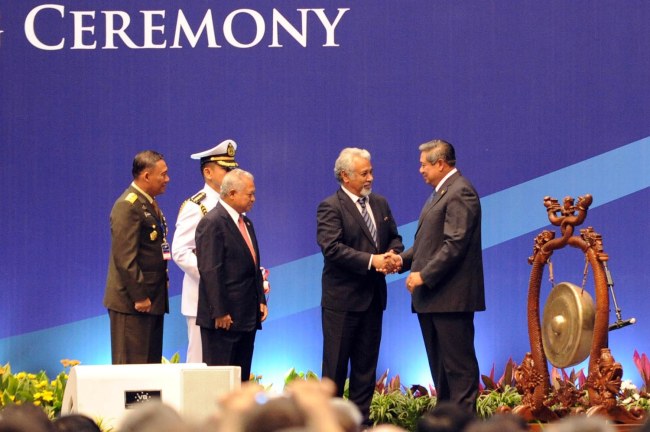As the death toll rises from yesterday’s terrible crash of an Indonesian Air Force C-130B Hercules, two sets of questions emerge: the first concerns the number and type of passengers on board, and second, the state of Indonesia’s ageing fleet. Today on Twitter, Evan Laksmana made some salient observations:
According to TNI-AU chief Air Marshal Agus Supriatna, the plane was authorised only to carry military personnel and their family members; a common practice for remote postings. Associated Press has reported that 32 passengers on board the C-130 were not designated either category. Family members of some of the victims reveal some passengers were willing to pay for their seats on the C-130 rather than board a commercial aircraft because it was cheaper. Supriatna has said he would fire any officer involved in commercialisation of the flight. If that’s the case, I have some more questions: how often are these practices occurring? Are the aircraft being used to transport other goods? Was this more rent-seeking behaviour from TNI officers, and why?
Other questions have been raised about the air worthiness of the Hercules. President Jokowi has called for an investigation into the cause of the accident, as well as a ‘fundamental restructuring’ of TNI’s capability management and procurement.
TNI must legitimately review its capability development cycle. But some politicians and lawmakers in Indonesia are quick to reduce the matter to developing indigenous capability over acquiring secondhand platforms like the C-130. For instance, when an F-16 jet caught fire at a military parade for the President in April, Supriatna declared that Indonesia shouldn’t have bought used jets, arguing the money would have been better spent on new ones. But Prashanth Parameswaran explains, it’s not a simple dichotomy; the decision at the time to buy older yet upgraded aircraft was a reflection of complex considerations.
If the aircraft are upgraded and in good working condition when they are handed over, what systems does Indonesia have in place to maintain and sustain them? When Australia agreed to sell Indonesia used C-130Hs in 2012, the MoU clearly stated that Indonesia would be responsible for refurbishment and maintenance costs.
I haven’t seen a report yet for the F-16 that caught fire in April and the results of the C-130 investigation won’t be available for some time. But, until it acquires newer platforms or builds its own, Indonesia will need its current fleet of used C-130s for HADR operations and to move troops around. Hopefully the good from this disaster is another push for TNI to be transparent in how it maintains its airframes and how its officers are using them.




